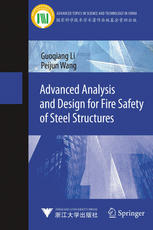

Most ebook files are in PDF format, so you can easily read them using various software such as Foxit Reader or directly on the Google Chrome browser.
Some ebook files are released by publishers in other formats such as .awz, .mobi, .epub, .fb2, etc. You may need to install specific software to read these formats on mobile/PC, such as Calibre.
Please read the tutorial at this link: https://ebookbell.com/faq
We offer FREE conversion to the popular formats you request; however, this may take some time. Therefore, right after payment, please email us, and we will try to provide the service as quickly as possible.
For some exceptional file formats or broken links (if any), please refrain from opening any disputes. Instead, email us first, and we will try to assist within a maximum of 6 hours.
EbookBell Team

4.7
46 reviewsAdvanced Analysis and Design for Fire Safety of Steel Structures systematically presents the latest findings on behaviours of steel structural components in a fire, such as the catenary actions of restrained steel beams, the design methods for restrained steel columns, and the membrane actions of concrete floor slabs with steel decks. Using a systematic description of structural fire safety engineering principles, the authors illustrate the important difference between behaviours of an isolated structural element and the restrained component in a complete structure under fire conditions.
The book will be an essential resource for structural engineers who wish to improve their understanding of steel buildings exposed to fires. It is also an ideal textbook for introductory courses in fire safety for master’s degree programs in structural engineering, and is excellent reading material for final-year undergraduate students in civil engineering and fire safety engineering. Furthermore, it successfully bridges the information gap between fire safety engineers, structural engineers and building inspectors, and will be of significant interest to architects, code officials, building designers and fire fighters.
Dr. Guoqiang Li is a Professor at the College of Civil Engineering of Tongji University, China; Dr. Peijun Wang is an Associate Professor at the School of Civil Engineering of Shandong University, China.